Canada FPT Payment Dates 2025 [Official Dates]
Canada FPT (Federal-Provincial-Territorial) payments are government-issued financial supports in Canada, including tax credits and benefits such as the GST/HST credit and Canada Child Benefit. These payments aim to assist low- and moderate-income individuals and families by offsetting costs like taxes or childcare expenses. The payment dates for Canada FPT vary depending on the benefit type.
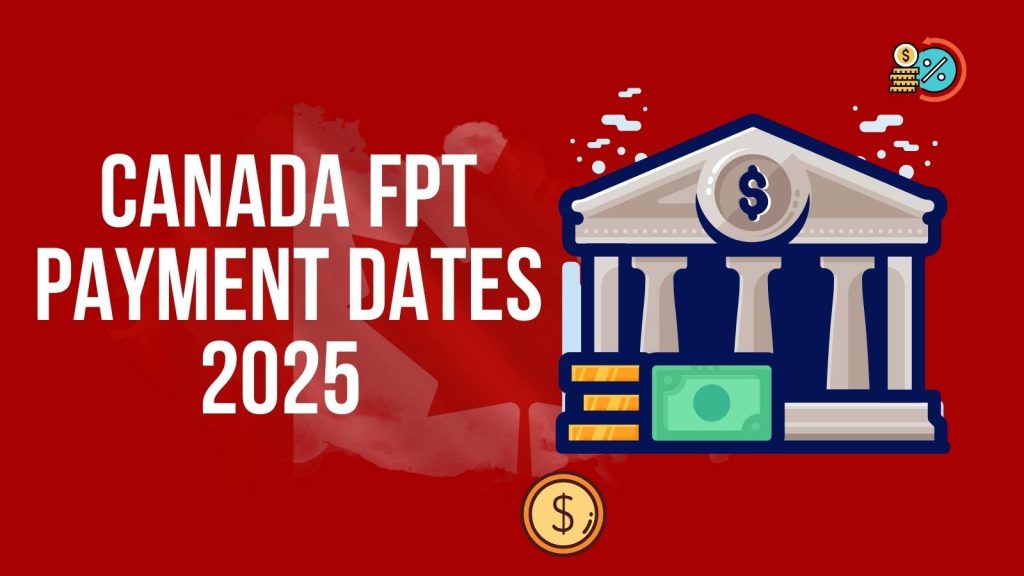
Canada FPT
The Canada FPT (Federal-Provincial-Territorial) is a collective term for tax credit payments issued by the Canadian government in collaboration with provincial and territorial administrations.
These payments are designed to support social welfare, stimulate the economy, and ensure tax equity. Common programs under the FPT umbrella include the Canada Child Benefit (CCB), GST/HST Credit, and various provincial credits like climate action or property tax grants. Eligibility for FPT payments is determined through annual tax returns, and the payments are distributed either monthly or quarterly, depending on the specific program.
1. Canada FPT payments
Here is a complete list of Canada FPT (Federal-Provincial-Territorial) payments:
2. Canada FPT payment Dates
The FPT payment dates for 2025 are as follows:
Program | Frequency | Payment Dates in 2025 |
Canada Child Benefit | Monthly | Jan–Dec on specified dates |
GST/HST Credit | Quarterly | Jan.3 / Apr.4 / Jul.4 / Oct.3 |
Old Age Security | Monthly | Same as CPP |
Canada Pension Plan | Monthly | Jan–Dec on specified dates |
Canada Carbon Rebate | Quarterly | Jan.15 / Apr.15 / Jul.15 / Oct.15 |
Advanced CWB | Quarterly | Jan.10 / Jul.11 / Oct.10 |
Alberta CFB | Quarterly | Feb.27 / May.27 / Aug.27 / Nov.27 |
Ontario Trillium Benefit | Monthly | Jan–Dec on specified dates |
It’s important for you to know both the Canada FPT payment dates and the AISH payment dates so that you can better plan your finances and ensure you receive all your benefits on time.
3. FPT Payment Amount
The amount you will receive depends on various factors. The amount you receive varies based on the following factors:
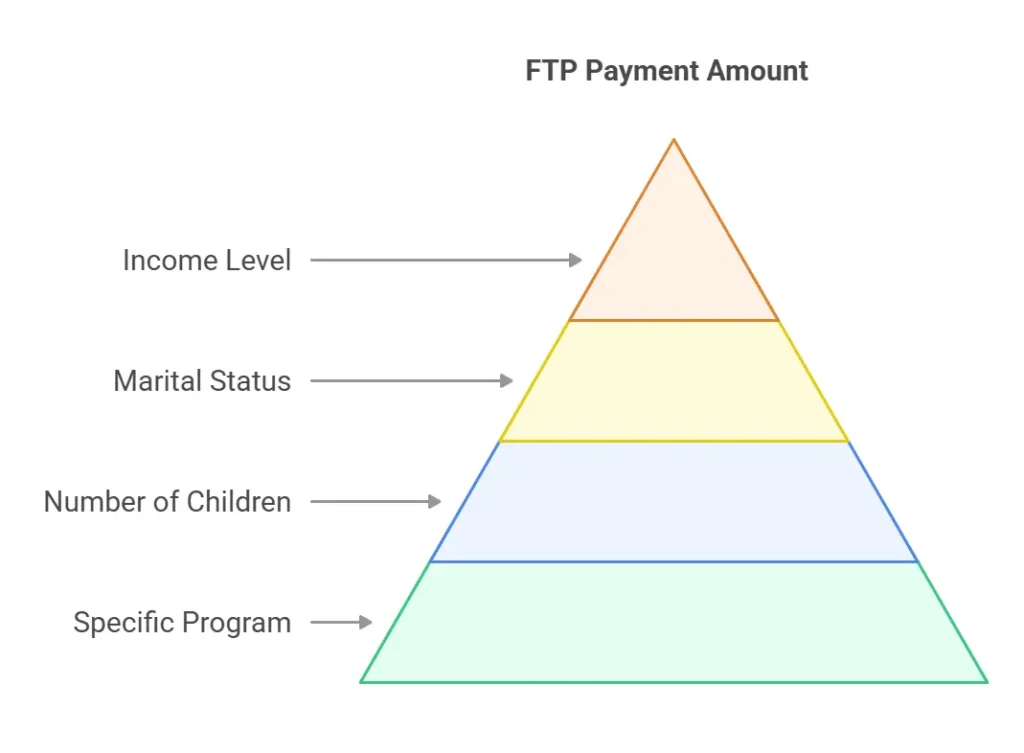
For Example:
Keep in mind that these payments are estimated. The actual amount depends upon specific circumstances. To calculate how much you will receive, use the CRA payment Amount Calculator.
FPT Payments Eligibility
You must follow the following eligibility criteria to receive FPT benefits:
1. General Eligibility
All these circumstances are applied in most of the programs. However, here are the program-specific criteria. Withdrawals from a TFSA do not count as taxable income, therefore it does not effect Canada FPT payments.
2. Program-Specific Eligibility
Program eligibility depends on certain rules, which change based on the type of support. Below are the requirements for all programs
2.1. Canada Child Benefit (CCB)
The Canada Child Benefit (CCB) is a tax-free monthly payment administered by the Canada Revenue Agency (CRA) to assist families with the cost of raising children under 18. It is designed to support low- and middle-income families, with payments calculated based on the previous year’s adjusted family net income (AFNI).
Key Requirements:
Checkout CCB Payment Dates for more detailed information about Canada Child Benefit.
2.2. (GST/HST) Credit
The GST/HST Credit is a tax-free quarterly payment provided by the Canada Revenue Agency (CRA) to help individuals and families with low or modest incomes offset the costs of the Goods and Services Tax (GST) or Harmonized Sales Tax (HST) they pay on goods and services.

Eligibility Requirements:
The credit amount depends on factors like adjusted family net income, marital status, and the number of eligible children. Get detailed information on GST/HST Payment Dates.
2.3. Canada Carbon Rebate (Climate Action Incentive Payments)
The Canada Carbon Rebate (CCR) for individuals, formerly known as the Climate Action Incentive Payment, is a tax-free quarterly payment designed to help individuals and families offset the costs of federal carbon pollution pricing. It is available in provinces where the federal carbon pricing system applies: Alberta, Saskatchewan, Manitoba, Ontario, New Brunswick, Nova Scotia, Prince Edward Island, and Newfoundland and Labrador.
Eligibility Criteria:
Residents must have filed their income tax return for the previous year and live in an eligible province. Rural residents may qualify for a 20% top-up.
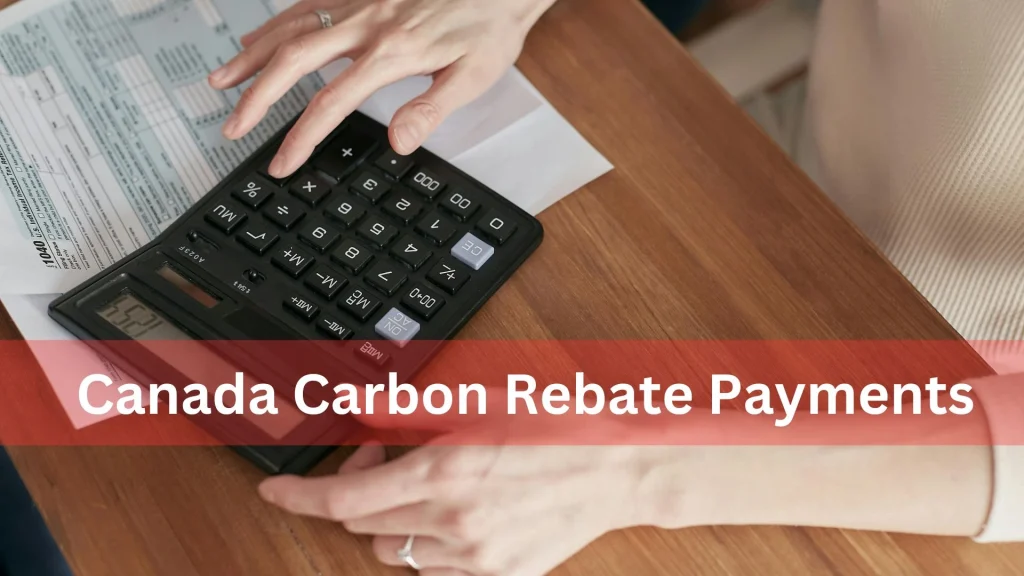
Note that the Canada Carbon Rebate (CCR) is not applicable in the following provinces and territories because they have their own carbon pricing systems that meet or exceed federal standards:
Provinces | Territories |
|---|---|
British Columbia | Northwest Territories |
Quebec | Yukon |
Nunavut |
These regions manage their own carbon pricing programs and rebates, so residents and small businesses are not eligible for the federal CCR payments.
2.4. Old Age Security (OAS)
The Old Age Security (OAS) program is a Canadian government benefit that provides a monthly taxable pension to seniors aged 65 and older. It is designed to offer financial support during retirement, regardless of employment history or prior contributions.

Eligibility Requirements:
2.5. Canada Pension Plan (CPP)
The Canada Pension Plan (CPP) is a contributory, earnings-based social insurance program that provides financial support to Canadian workers and their families during retirement, disability, or after the death of a contributor. It is one of the key pillars of Canada’s public retirement income system, alongside Old Age Security (OAS) and private savings.
Eligibility:
All employed and self-employed individuals in Canada (except Quebec, which has its own Quebec Pension Plan) contribute to the CPP. To qualify for benefits, contributors must have made at least one valid contribution.
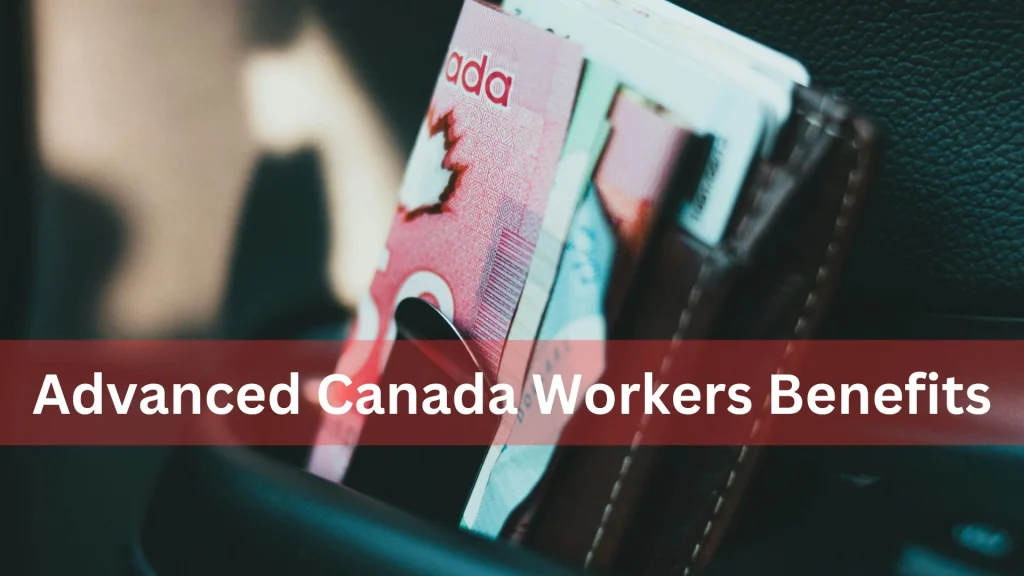
CPP benefits are not automatic; individuals must apply online via My Service Canada Account or through a paper application. Benefits are taxable and indexed annually to inflation. Checkout CPP Payment Dates for more information.
2.6. Disability Tax Credit (DTC)
The Disability Tax Credit (DTC) is a non-refundable tax credit provided by the Canadian government to help individuals with severe and prolonged physical or mental impairments, or their supporting family members, reduce the amount of income tax they owe. It is designed to offset additional costs associated with disabilities and ensure financial equity.
Applicants must follow this criteria:
The DTC provides critical financial relief for those facing long-term disabilities and their families.
2.7. Advanced Canada Workers Benefit (ACWB)
The Advanced Canada Workers Benefit (ACWB) is a federal initiative that provides low-income workers with advance payments of the Canada Workers Benefit (CWB) to help manage living expenses throughout the year. It is part of the broader CWB program, which supports individuals and families earning low incomes.
The main purpose is to offers financial relief to low-income workers by providing up to 50% of their CWB entitlement in advance, distributed quarterly. CWB payment dates are scheduled every three months to ensure eligible recipients get support on time.
2.8. Alberta Child and Family Benefit
The Alberta Child and Family Benefit (ACFB) is a tax-free financial assistance program provided by the Alberta government to support low- and middle-income families with children under 18 years of age. It combines the former Alberta Family Employment Tax Credit (AFETC) and Alberta Child Benefit (ACB) into one streamlined payment.
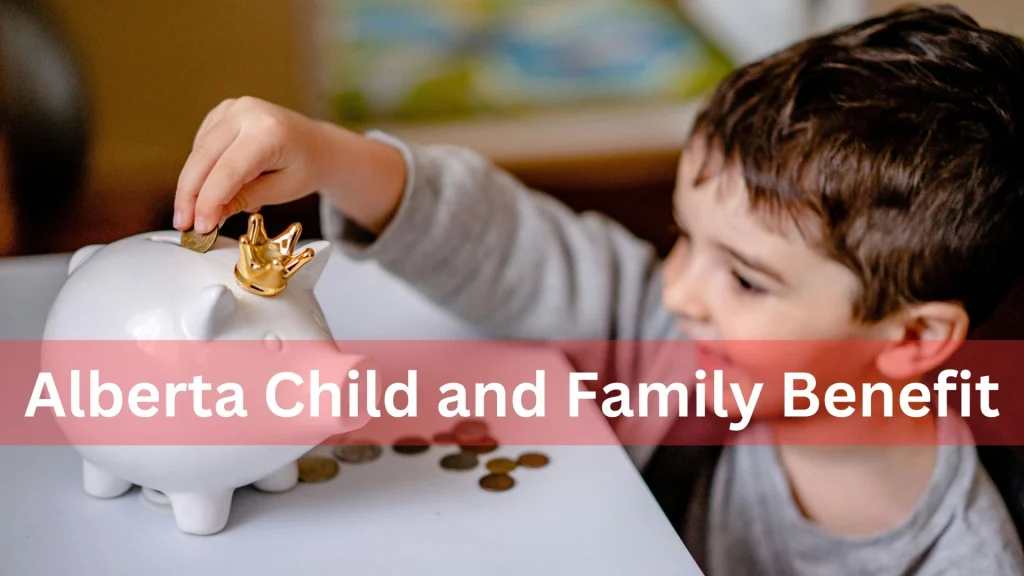
Eligibility:
2.9. Ontario Trillium Benefit (OTB)
The Ontario Trillium Benefit (OTB) is a tax-free financial assistance program that combines three provincial tax credits to help low- and moderate-income Ontarians manage energy costs, property taxes, and sales taxes. It is administered by the Canada Revenue Agency (CRA) on behalf of the Ontario government.
Eligibility:
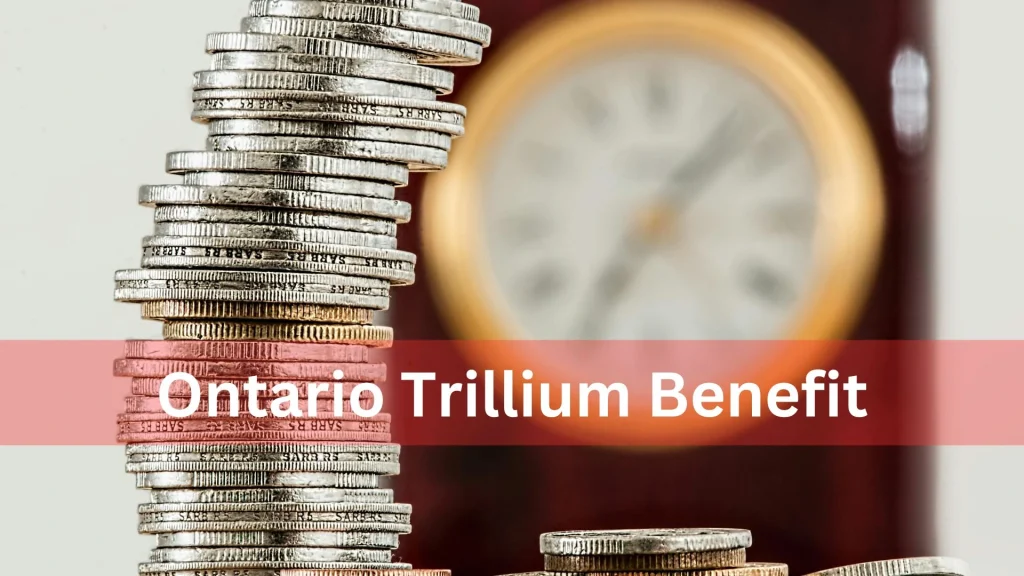
File your income tax return and complete Form ON-BEN to apply for the OEPTC and NOEC components. The CRA automatically assesses eligibility based on your tax information.
Your eligibility also depends upon where you were living on the 1st of the month. For example, If you live in Sudbury on November 1 and move to London later in November, you qualify for the November NOEC payment but not for future payments
2.10. Canada Disability Benefit
The Canada Disability Benefit (CDB) is a new federal financial assistance program aimed at reducing poverty and improving financial security for low-income, working-age Canadians with disabilities. Payments are set to begin in July 2025.

Eligibility:
The CDB is part of Canada’s Disability Inclusion Action Plan and aims to supplement existing disability benefits rather than replace them. It addresses gaps in financial support for people with disabilities who often face higher poverty rates and employment barriers.
2.11. Veteran Disability Pension
The Veteran Disability Pension is a tax-free monthly benefit provided by Veterans Affairs Canada (VAC) to compensate Canadian Armed Forces members, veterans, and Royal Canadian Mounted Police (RCMP) members for service-related injuries or illnesses. It recognizes the impact of these conditions on their quality of life.
Eligibility:

Submit an application through My VAC Account or by mail. Supporting documents such as medical records and proof of service are required. VAC then reviews the claim to determine eligibility and entitlement.
FPT Benefit Enrollment and Application Requirements
Canada Revenue Agency automatically determines the eligibility and enrolls the citizens via annual tax return records. Therefore, you do not need to apply for FPT benefits.
However, some programs need an initial application for further procedure. You have to submit an application form for such programs.
FPT Benefits Payment Methods
There are two methods to receive the payments:
1. FTB Direct Deposit
In direct deposit, payments are directly sent into the bank accounts. The FPT is a fast and reliable way for payments. To set up direct deposit:
- Log in to your CRA My Account online.
- Provide your banking information under the “Direct Deposit” section.
2. FPT Cheques
FPT cheques are another way to receive the benefits payments. It is a completely slow and less secure method. In this method, payment cheques are sent to the registered mailing address.
Tips: Here are some practical tips that you should follow for a hassle-free payment deposit.
- Always update CRA as soon as possible about the change in your banking details or mailing address.
- Ensure that your payment details are valid and up to date.
- Prefer Direct deposit over cheque payments to ensure safe and reliable deposit.
3. Importance Of FPT Payments
FPT payments play a vital role in the:
- FPT payments provide financial aid to low and moderate-income families. In this way, low and moderate-income families get financial aid from the government.
- Every citizen gets the necessary benefits through these programs.
- These payments help to stimulate tax paying and economic growth.
For many Canadians, it’s not just financial support, but a way to live good life. Trust me! These payments mean a lot for many Canadians.

FPT Helpline
If you have any issues related to FPT payments, you can contact the Canada Revenue Agency (CRA) for assistance. Below are the contact details:
Helpline Number
- General Enquiries (English): 1-800-959-8281
- TTY (Hearing Impaired): 1-800-665-0354
Mailing Address
- Canada Revenue Agency
- Jonquière Tax Centre
- 2251 René-Lévesque Blvd
- Jonquière QC G7S 5J2
For faster service, ensure you have your tax documents and personal information ready to validate your identity. Note that CRA’s phone lines are closed on Sundays, but automated services remain available 24/7.
Conclusion
Canada’s comprehensive financial support programs, including the Canada Pension Plan (CPP), Canada Child Benefit (CCB), GST/HST Credit, Canada Carbon Rebate (CCR), and other targeted benefits like the Disability Tax Credit (DTC) and Old Age Security (OAS), are designed to provide financial stability and equity for Canadians across various life stages and circumstances.
These programs address diverse needs, from retirement income and disability support to assistance for families, veterans, and low-income individuals. By offering predictable payment schedules, tax-free benefits, and inflation adjustments, these initiatives ensure timely and meaningful support while promoting inclusivity and reducing financial barriers.
